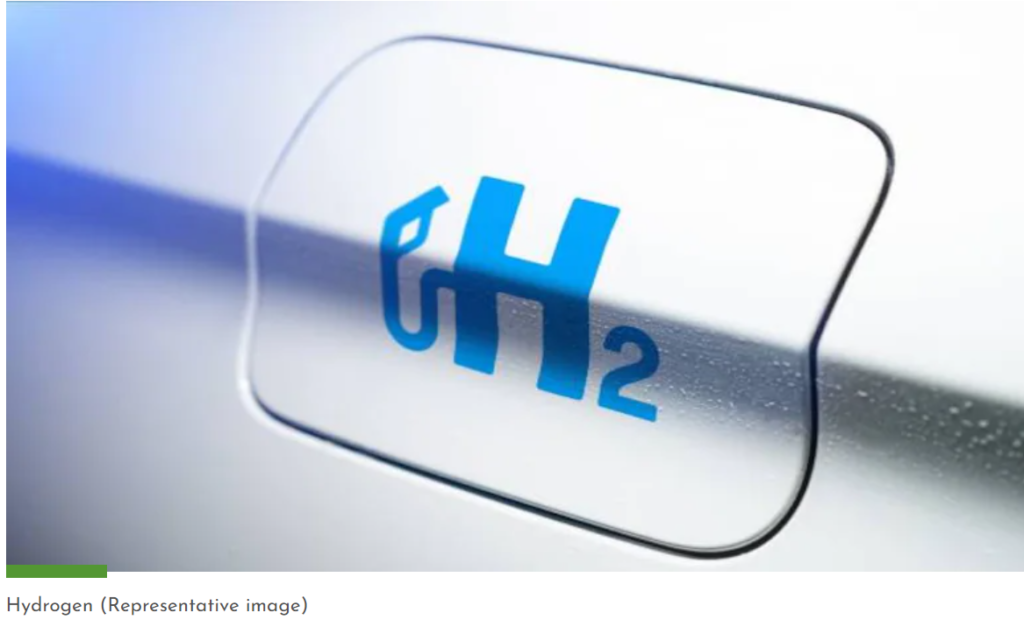Apart from transportation, hydrogen can be a “decarbonising agent” for industries like chemicals, iron, steel, fertiliser and refining, transport, heat and power.Apart from transportation, hydrogen can be a “decarbonising agent” for industries like chemicals, iron, steel, fertiliser and refining, transport, heat and power.
On India’s 75th Independence Day, Prime Minister Narendra Modi announced the launch of the National Hydrogen Mission (NHM). He said that his government’s aim is to make India a global hub for the production and export of green hydrogen.
Increasing concerns over the issue of climate change and the potential of hydrogen as a game changer in the energy arena may become driving efforts by nations to induct hydrogen to achieve the target of becoming a low-carbon economy.
National Hydrogen Mission:
The proposal for National Hydrogen Mission was made in the Budget 2021 to launch NHM that would enable the generation of hydrogen “from green power sources”.
Speaking at the Hydrogen Round Table on ‘Hydrogen Economy: New Delhi Dialogue-2021’ in April, former Petroleum Minister Dharmendra Pradhan had noted it was the goal of controlling emissions that makes hydrogen fuel so attractive to policy-makers.
“The enthusiasm about hydrogen has a simple reason: whether it’s used in a fuel cell or burned to create heat, wherever hydrogen replaces fossil fuels, it slows global warming,” Pradhan had said.
Apart from transportation, hydrogen can be a “decarbonising agent” for industries like chemicals, iron, steel, fertiliser and refining, transport, heat and power.
Though the details of NHM are yet to emerge, India has taken several exploratory steps. “We are working on a pilot project on Blue Hydrogen, Hydrogen CNG (H-CNG) and Green Hydrogen… we are blending hydrogen with compressed natural gas for use as transportation fuel as well as an industrial input to refineries,” Pradhan had said.
As part of a pilot project in Delhi, Pradhan said 50 buses have been rolled out which use blended hydrogen in compressed natural gas (CNG). He had also cited about the plans to scale it up in the coming months across the country.
How can Hydrogen fuel help?
Hydrogen being the most abundant element in the universe, is found in complex molecules such as water or hydrocarbons on earth. Hydrogen is an energy carrier, which means it has to be produced, or extracted, and stored before it can be used. Unlike common combustion engines, which creates harmful byproducts like nitrogen oxides, the only byproduct of hydrogen fuel is water.
“Combusting one kilo of hydrogen releases three times more energy than a kilo of gasoline and produces only water. Then, there are hydrogen fuel cells, which is an electrochemical cell that converts the chemical energy of hydrogen and oxygen into electricity, whose waste product, again, is water. Fuel cells can produce electricity continuously for as long as hydrogen and oxygen are supplied,” News18 quoted World Energy Council (WEC) as saying.
How is Hydrogen produced?
According to WEC, 96 percent of hydrogen is produced from fossil fuels via carbon intensive processes. Based on extraction methods, the hydrogen produced is classified as ‘grey’, ‘blue’, or ‘green’ hydrogen.
From fossil fuel, ‘grey’ hydrogen can be produced. Though it is not as expensive as the other methods, releases a lot of carbon dioxide. When CO2 given out during its production is locked up through carbon capture and storage (CCS) processes, ‘grey’ hydrogen becomes ‘blue’ hydrogen.
Both grey and blue hydrogen are produced by the same processes, the only difference for ‘blue’ hydrogen being that the CO2 produced is sequestered.
The Indian government is aiming to produce ‘green’ hydrogen, which is mostly produced from clean energy sources like renewables. The ‘green’ hydrogen is released via electrolysis of energy from renewable sources. The hydrogen produced from this method gives rise to no CO2 emissions, is expensive and not commercially viable yet.
Challenges ahead?
In order to bring down the cost of green hydrogen production the Centre is going to commit an outlay of Rs 800 crore between 2021 to 2024 for pilot projects and research, development and demonstration (RD&D) projects while investments from private players are also being counted on for a push towards a hydrogen future.
The Centre had even told the Parliament that the Ministry of New and Renewable Energy “has been supporting various projects in academic institutions, research and development organisations and industry for development of hydrogen and and fuel cells”. It also added that 14 RD&D projects are currently being pursued. Meanwhile, 18 percent blend of Hydrogen with CNG (HCNG) was notified as an automotive fuel in September 2020.The government said that the IITs, IISc, Banaras Hindu University, Council for Scientific and Industrial Research laboratories etc. are exploring different aspects of hydrogen production.
Article Credit: moneycontrol
